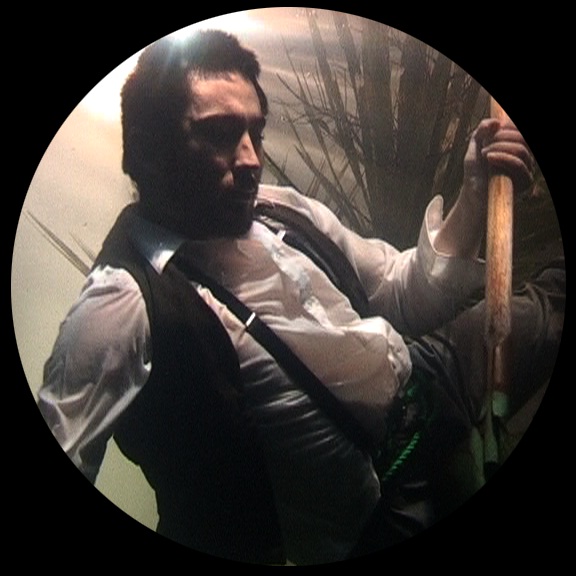ARTISTS Brett Graham and Rachael Rakena CURATOR Alice Hutchison OTHER VENUES Venice Biennale, 2007; Waikato Museum of Art and History, Hamilton
In te reo Māori, Āniwaniwa means many things: the blackness of deep water, storm clouds, a state of bewilderment, a sense of disorientation, confusion as one is tossed underwater, a rainbow, a sign of hope. All can be associated with this collaborative work by Brett Graham (Ngāti Koroki Kahukura) and Rachael Rakena (Ngāi Tahi, Ngāpuhi).
Āniwaniwa is also the name of a set of rapids at the narrowest point of the Waikato River. In 1947, it was flooded as a result of the creation of a hydroelectric power station at Karapiro. The small village of Horahora, the roots of Graham’s family, was lost, along with many other Ngāti Koroki Kahukura waahi tapu (sacred sites). As a child, Graham’s father, Fred Graham, was relocated with the entire community, as their land was slowly overcome by the encroaching waters.
The light is low. Visitors view the work from the ground, lying horizontally on mats and cushions. Graham’s carved forms are suspended from the ceiling. They recall wakahuia, traditional vessels that contain precious things, protecting their mana. The sculptures recall coral, but are blackened and unearthly, suggesting the deepest watery realms. They encase screens, presenting Rachel Rakena's ghostly moving-images of an underwater world: a waka, powerlines, hanging washing, suitcases, and unfinished weaving float in and out of the frames. Swimming and walking figures in eighteenth-century dress (the time before the flood) progress through the murk, as their faces swell and whiten.
The project addresses the historical events at Horahora specifically, and the close relationship Pacific peoples have to water generally. Rakena says, ‘As I worked with people in water, I found culturally specific relationships between Māori and water impossible to ignore. We are island people living in a vast ocean. We belong to water just as we belong to land.’ As communities around the world risk being lost to rising waters, Āniwaniwa speaks both to history and urgent matters.
Āniwaniwa arrives direct from the 2007 Venice Biennale, where it was a collateral exhibition (New Zealand did not present a national pavilion that year). After Wellington, it travels to Hamilton’s Waikato Museum, ‘coming home’ to the area ‘where Horahora now lies in her watery grave and where the imagery has its whakapapa’.










